
I love to travel and have seen many beautiful bodies of water with astonishing shade. But perhaps the lake called Blue Eye in Albania is one of the most beautiful ones. As we were in Saranda on our way home, we decided to visit this famous place. It's just 16 kilometers away from Saranda. The Blue Eye is located halfway between Gjirokastra and Saranda.
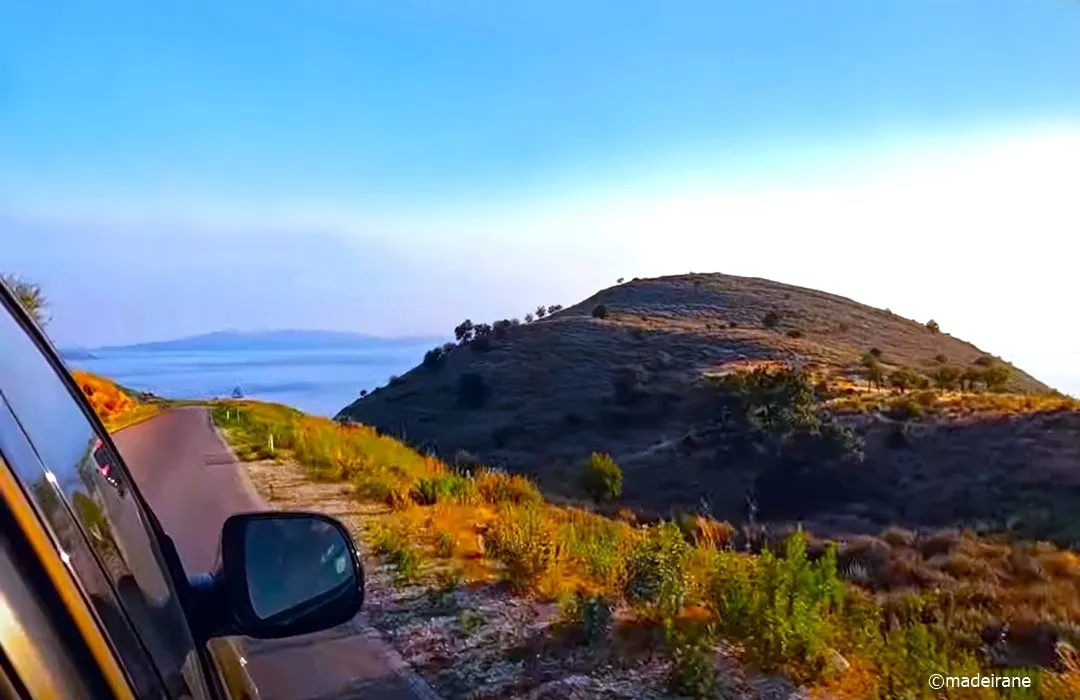
Along the way, we were accompanied by many breathtaking views, so several times I asked to stop as I wanted to capture this beauty. We passed pastures where cows graze, fields and saw the Mali and Jera mountain range, admired the dense forest with cherry trees, hazel, pine and spruce.

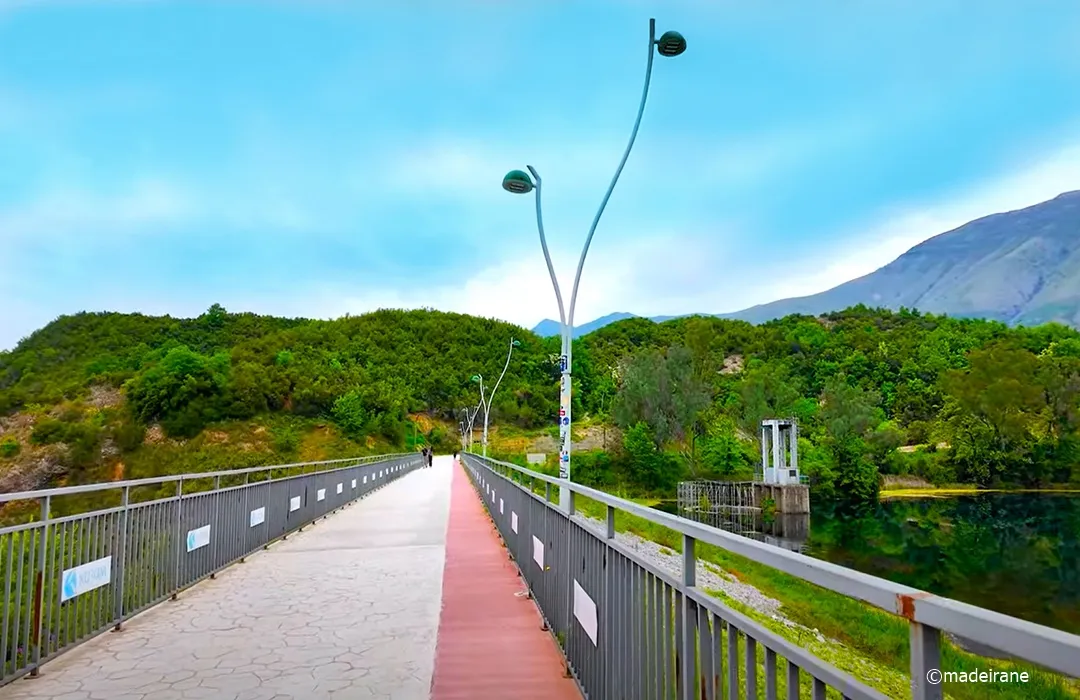
The space of the Blue Eye National Park is large, but the source itself takes up much less space. What we saw there exceeded all our primary expectations.
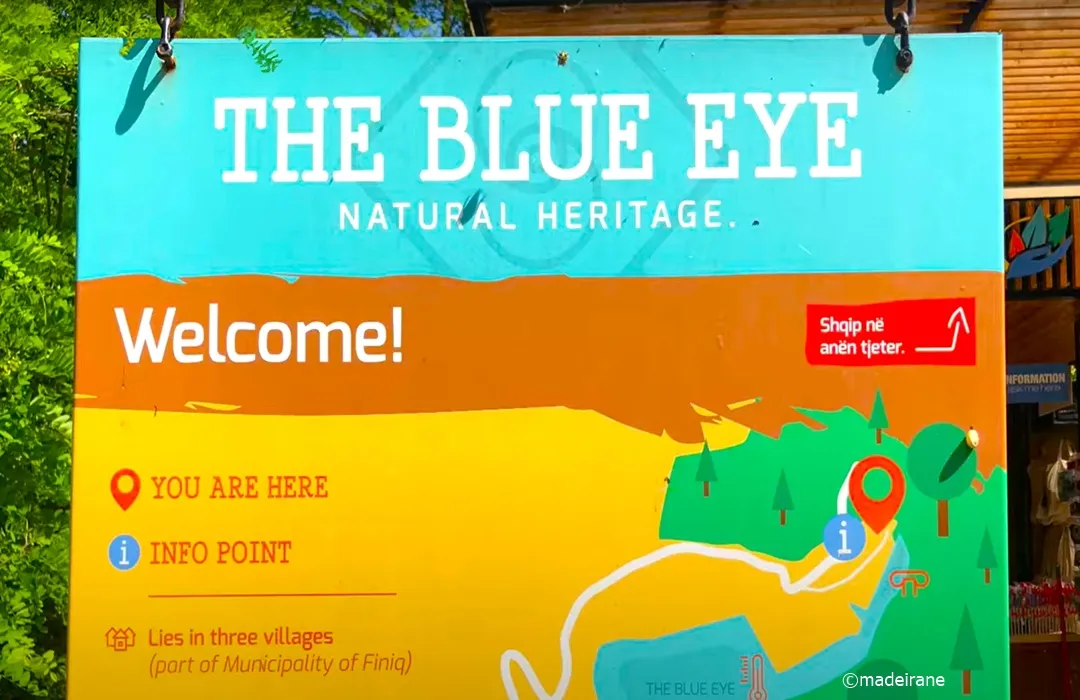
We arrived around 16:45, spent a little time at the security post, then drove to the parking lot closest to the spring. The Blue Eye is an interesting geological object and a rare karst formation under the mountain, from which cold water rises with strong pressure.
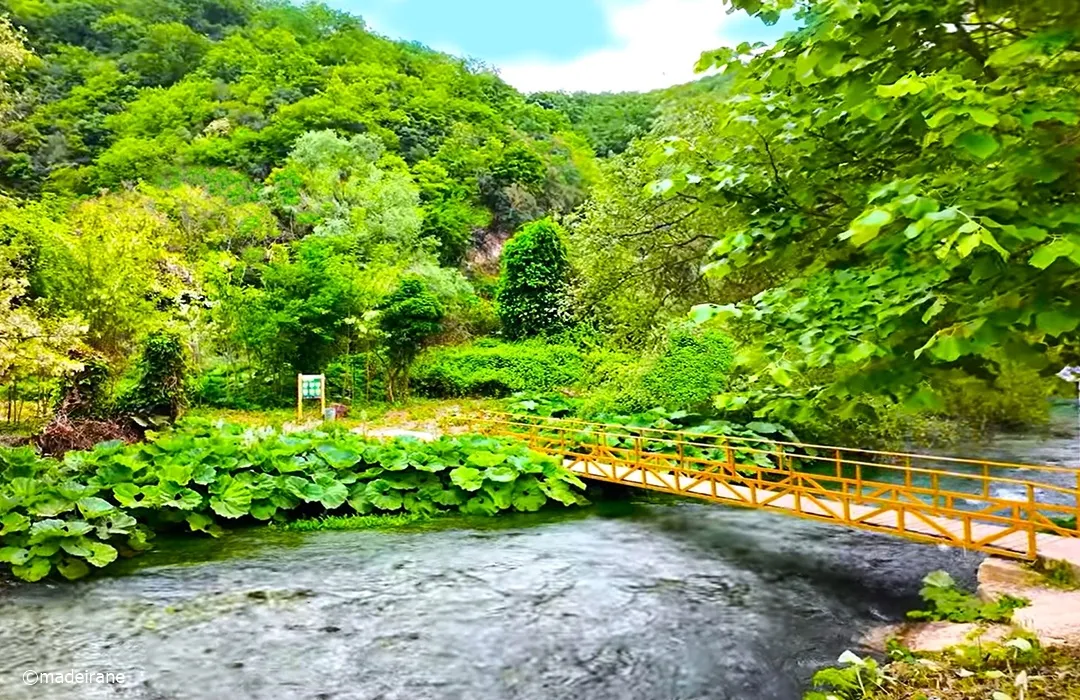
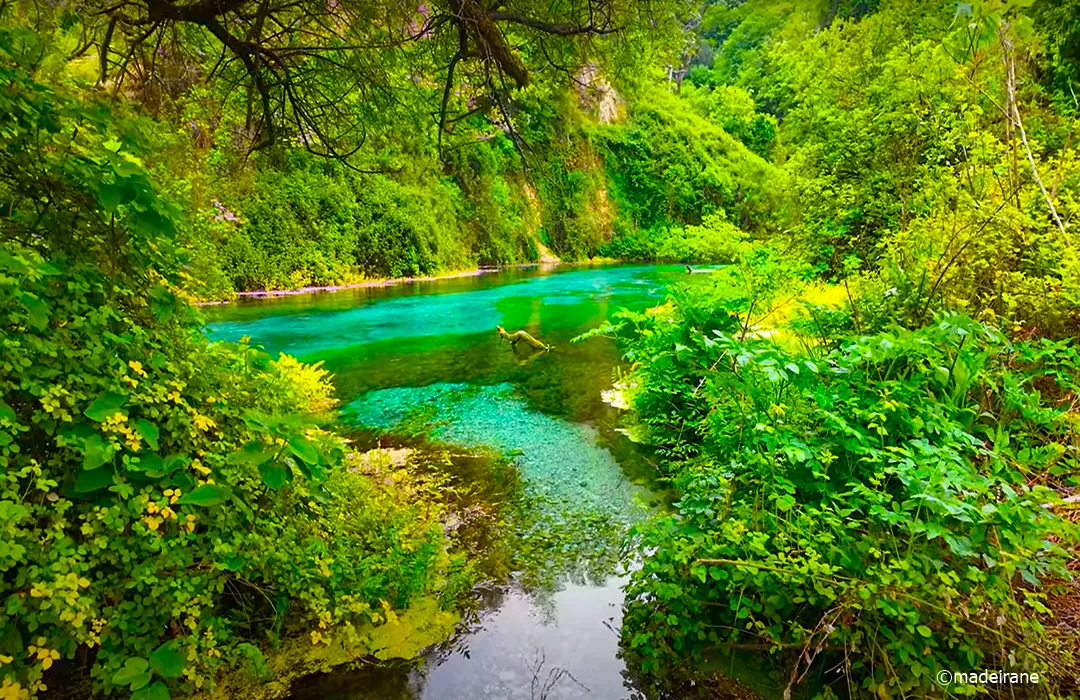
The Blue Eye spring got its name because it resembles a human eye, since in the very center of the reservoir the color of the water is dark blue, and around it is light blue, and the analogy leads us to associations with the eye.
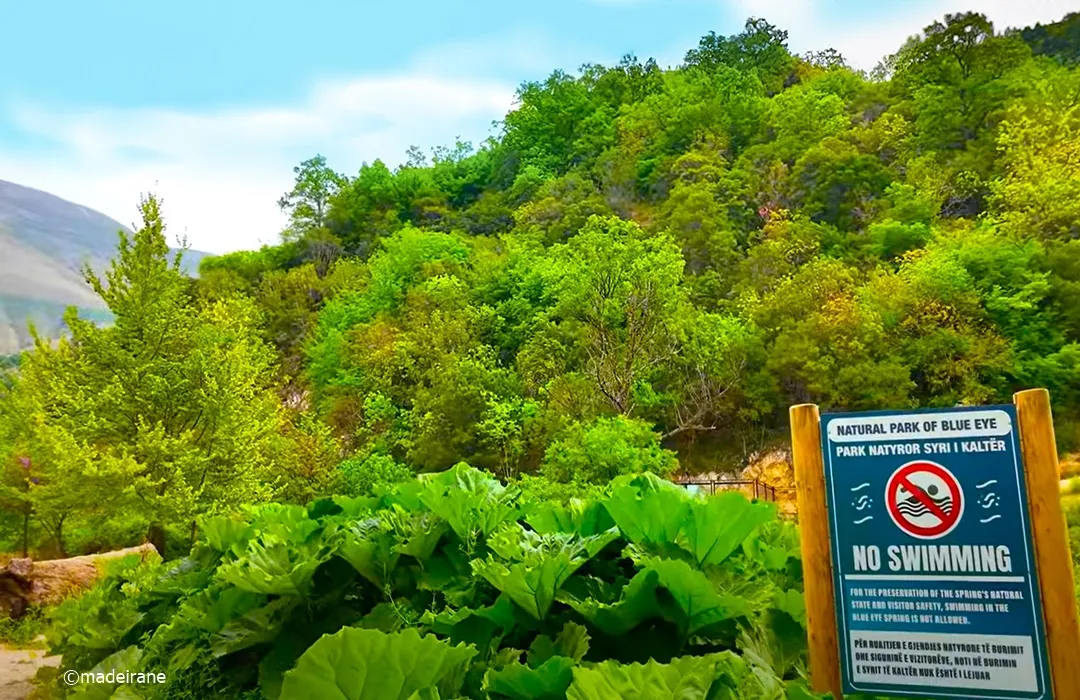
As soon as you reach the Blue Eye spring itself and look at it, you cannot take your eyes off the crystal clear and transparent blue water, in which all the stones and algae are visible. This landscape took our breath away. The water in the spring is not cold, but simply icy. When you go into it to take a photo, your legs start to cramp, and you jump out like a bullet, because it is impossible to stay in it for a long time. At any time of the year, the temperature in the spring does not exceed 13 degrees.
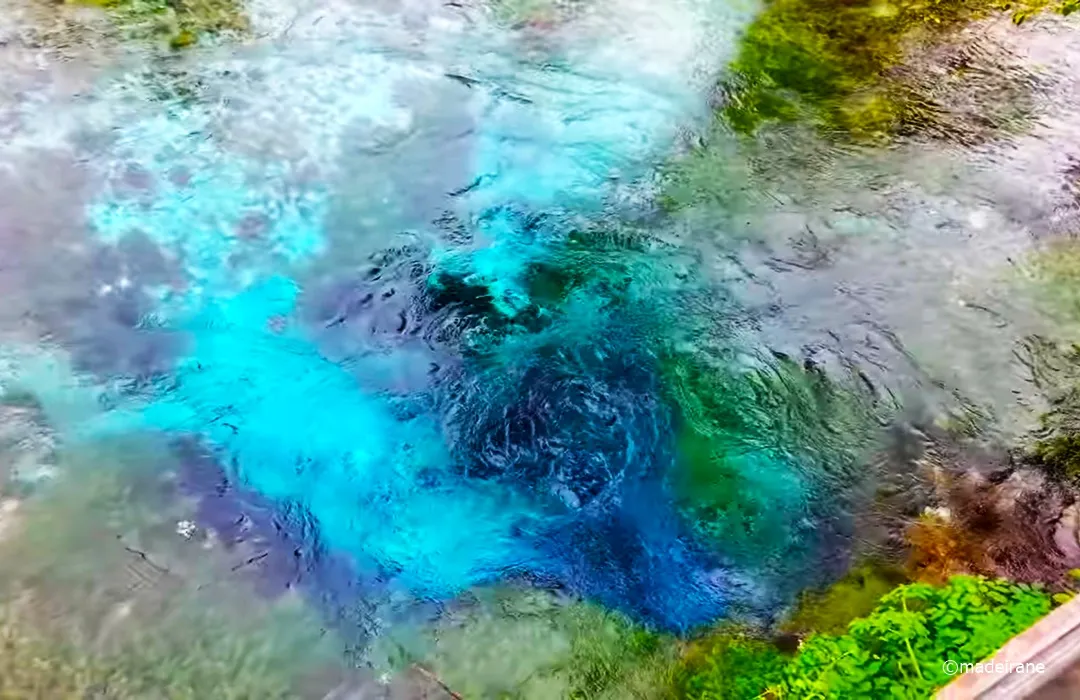

The depth of the spring is still unknown. Even divers went down there but never reached the bottom, although they went down to a depth of 64 meters. But despite everything, desperate volunteers and daredevils risk swimming and diving into the very center of the spring from the bridge, although it is written everywhere that you can't swim in it, but this does not stop tourists who want to experience the thrill. When we went there, we thought that we would also jump, but when we went into the water, we changed our minds.

The water is cold, transparent, with amazing shades and color transitions. When you find yourself in this place, it may seem that you have ended up in a hyperrealistic computer game with excellent graphics or in a fantasy world.
I didn't throw coins or pebbles into the Blue Eye spring, so I can't tell you about the result of this experiment, which will push them back to the surface in a few seconds.

Not high above the Blue Eye spring itself, there is a small observation deck from which young guys jump into the cold water. From the observation deck, the bottom seems very close. I had no desire to dive into this beautiful Blue Eye, but I certainly did not leave the observation deck for a long time.

The Blue Eye spring is an amazing place and the color of the water immediately catches the eye. It seems that all shades from dark blue to light blue are available here. There is a riot of greenery around and the noise of water from the discharge of water. All this simply brought complete delight. The view from the observation deck was simply mesmerizing.

The Blue Eye spring flows into a lake, in which the water is bright blue and transparent. The spring also feeds the Bystrica River, which powers the hydroelectric power station. Generally, the Blue Eye is considered the most nutritious source in the country, since more than 3 cubic meters of cool fresh water flows from it every minute. The spring is surrounded by evergreen and fresh vegetation.

There were several kiosks with souvenirs and magnets nearby. A little further away there was a small café, where we drank a cup of strong coffee and ate ice cream. Our stay in paradise was gradually ending. We didn't want to leave, but time was running out, and we needed to move further.


This spring was a closed territory under communism and only the communist elite could enter this territory and outsiders were not allowed to enter, including tourists. Therefore, we are very lucky that now we can enjoy such stunning beauty upon arrival in Saranda. The Blue Eye is under state protection and is a national park which is under the protection of UNESCO.

Tip: it is better to come here by car or by bike if you have enough strength and skills, because it is quite far from the coast and in some places you have to ride uphill. It will not be so interesting in cloudy weather - the play of the sun in the waters of the source is perhaps one of the most beautiful moments. In the heat, this is a great place for relaxation and a picnic - the water spring is pleasantly cool, and the crystal clear water will allow you to refresh yourself. Also, in my opinion, it is better to get to the source on a weekday and in the afternoon, so that all the excursion buses have left and there is no hustle and bustle, from which all the romanticism and untouchedness of this place will evaporate.

💝💝💝💝💝💝💝💝💝💝
With love, @madeirane
Photos are taken by me.
© 2024
Translated from Lithuanian with DeepL.com (free version).
Mėgstu keliauti ir esu mačiusi daug gražių vandens telkinių su nuostabiu atspalviu. Tačiau galbūt vienas gražiausių yra Albanijoje esantis Mėlynosios Akies ežeras. Kadangi pakeliui namo buvome Sarandoje, nusprendėme aplankyti šią garsią vietą. Ji yra vos už 16 kilometrų nuo Sarandos. Mėlynoji Akis yra pusiaukelėje tarp Džirokastros ir Sarandos.
Pakeliui mus lydėjo daugybė kvapą gniaužiančių vaizdų, todėl kelis kartus prašiau sustoti, nes norėjau įamžinti šį grožį. Važiavome pro ganyklas, kuriose ganosi karvės, laukus, matėme Malio ir Jeros kalnų grandinę, grožėjomės tankiais miškais su vyšniomis, lazdynais, pušimis ir eglėmis.
Mėlynosios Akies nacionalinio parko erdvė didelė, tačiau pats šaltinis užima kur kas mažiau vietos. Tai, ką ten pamatėme, pranoko visus mūsų pirminius lūkesčius.
Atvykome apie 16:45, šiek tiek laiko praleidome apsaugos poste, tada nuvažiavome į arčiausiai šaltinio esančią automobilių stovėjimo aikštelę. Mėlynoji akis - įdomus geologinis objektas ir retas karstinis darinys po kalnu, iš kurio stipriu slėgiu kyla šaltas vanduo.
Mėlynosios Akies vardą šaltinis gavo dėl to, kad primena žmogaus akį, nes pačiame telkinio centre vandens spalva yra tamsiai mėlyna, o aplink jį - šviesiai mėlyna, ir ši analogija kelia asociaciją su akimi.
Vos pasiekę patį Mėlynosios Akies šaltinį ir pažvelgę į jį, negalėsite atitraukti akių nuo krištolo skaidrumo ir skaidriai mėlyno vandens, kuriame matyti visi akmenys ir dumbliai. Šis kraštovaizdis mums užgniaužė kvapą. Šaltinio vanduo nėra šaltas, o tiesiog ledinis. Įbridus į jį nusifotografuoti, kojas ima traukti mėšlungis, o iš jo iššoki kaip kulka, nes ilgai jame išbūti neįmanoma. Bet kuriuo metų laiku pavasarį temperatūra neviršija 13 laipsnių.
Šaltinio gylis iki šiol nežinomas. Į jį leidosi net narai, tačiau dugno taip ir nepasiekė, nors nusileido į 64 metrų gylį. Tačiau nepaisant visko, desperatiški savanoriai ir drąsuoliai rizikuoja plaukti ir nardyti į patį šaltinio centrą nuo tiltelio, nors visur rašoma, kad jame plaukti negalima, tačiau tai nesustabdo turistų, norinčių patirti jaudulį. Kai ten nuvykome, galvojome, kad irgi šoksime, bet įbridę į vandenį persigalvojome.
Vanduo šaltas, skaidrus, su nuostabiais atspalviais ir spalvų perėjimais. Atsidūrus šioje vietoje gali atrodyti, kad atsidūrei hiperrealistiniame kompiuteriniame žaidime su puikia grafika arba fantazijų pasaulyje.
Į Mėlynosios Akies šaltinį nemečiau monetų ar akmenukų, todėl negaliu papasakoti apie šio eksperimento rezultatą, kuris po kelių sekundžių juos išstums atgal į paviršių.
Neaukštai virš paties Mėlynosios Akies šaltinio yra nedidelė apžvalgos aikštelė, iš kurios jauni vaikinai šokinėja į šaltą vandenį. Nuo apžvalgos aikštelės dugnas atrodo labai arti. Neturėjau jokio noro pasinerti į šį nuostabų Mėlynosios Akies šaltinį, bet tikrai ilgai nesitraukiau iš apžvalgos aikštelės.
Mėlynosios Akies šaltinis yra nuostabi vieta, o vandens spalva iš karto patraukia akį. Atrodo, kad čia galima rasti visų atspalvių - nuo tamsiai mėlynos iki šviesiai mėlynos. Aplink akis akina žaluma ir nuo vandens išleidimo sklindantis triukšmas. Visa tai tiesiog kelia visišką pasigėrėjimą. Vaizdas iš apžvalgos aikštelės buvo tiesiog užburiantis.
Mėlynosios Akies šaltinis įteka į ežerą, kurio vanduo yra ryškiai mėlynas ir skaidrus. Šaltinis taip pat maitina Bystricos upę, kuri maitina hidroelektrinę. Apskritai Mėlynosios Akies šaltinis laikomas labiausiai maitinančiu šaltiniu šalyje, nes kas minutę iš jo išteka daugiau kaip 3 kubiniai metrai vėsaus gėlo vandens. Šaltinį supa amžinai žaliuojanti ir gaivi augmenija.
Netoliese buvo keli kioskai su suvenyrais ir magnetukais. Kiek toliau buvo nedidelė kavinukė, kurioje išgėrėme puodelį stiprios kavos ir suvalgėme ledų. Mūsų viešnagė rojuje pamažu baigėsi. Nenorėjome išvažiuoti, bet laikas bėgo, o mums reikėjo judėti toliau.
Šis šaltinis komunizmo laikais buvo uždara teritorija, į kurią galėjo patekti tik komunistų elitas, o pašaliniams, įskaitant turistus, buvo draudžiama įeiti. Todėl mums labai pasisekė, kad dabar, atvykę į Sarandą, galime mėgautis tokiu stulbinančiu grožiu. Mėlynoji Akis yra saugoma valstybės ir yra nacionalinis parkas, kurį saugo UNESCO.
Patarimas: geriau čia atvykti automobiliu arba dviračiu, jei turite pakankamai jėgų ir įgūdžių, nes nuo pakrantės yra gana toli, o kai kuriose vietose tenka važiuoti į kalną. Debesuotu oru nebus taip įdomu - saulės žaismas šaltinio vandenyje yra bene viena gražiausių akimirkų. Per karščius tai puiki vieta poilsiui ir piknikui - šaltinis maloniai vėsus, o krištolo skaidrumo vanduo leis atsigaivinti. Be to, mano nuomone, prie šaltinio geriau atvykti darbo dieną ir po pietų, kad visi ekskursijų autobusai būtų išvykę ir nebūtų šurmulio, nuo kurio išgaruotų visa šios vietos romantika ir neliečiamumas.